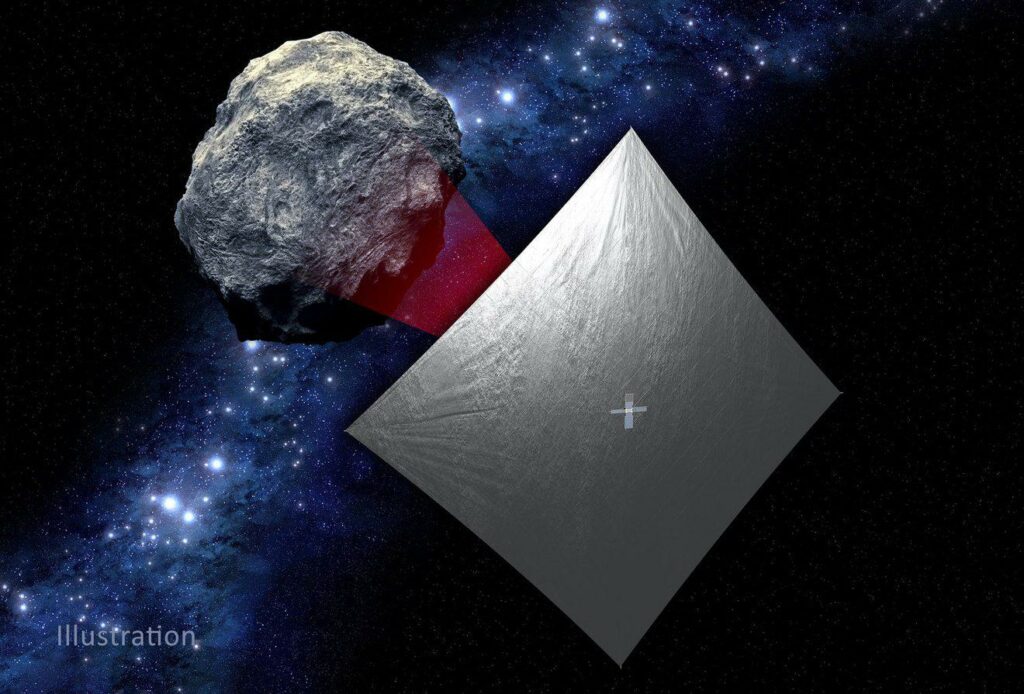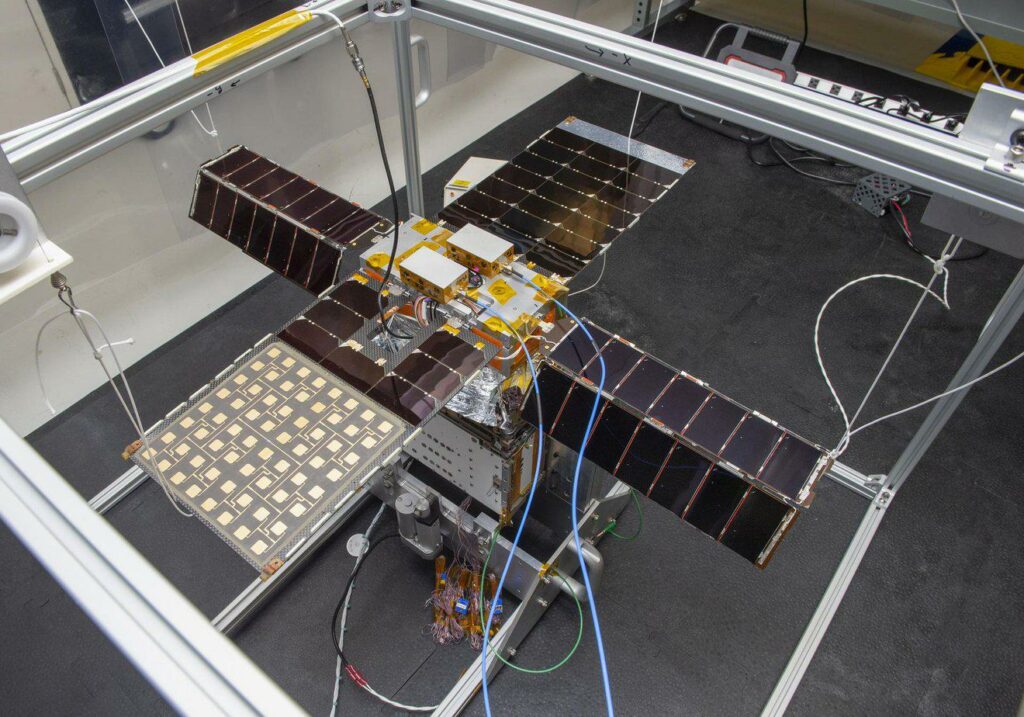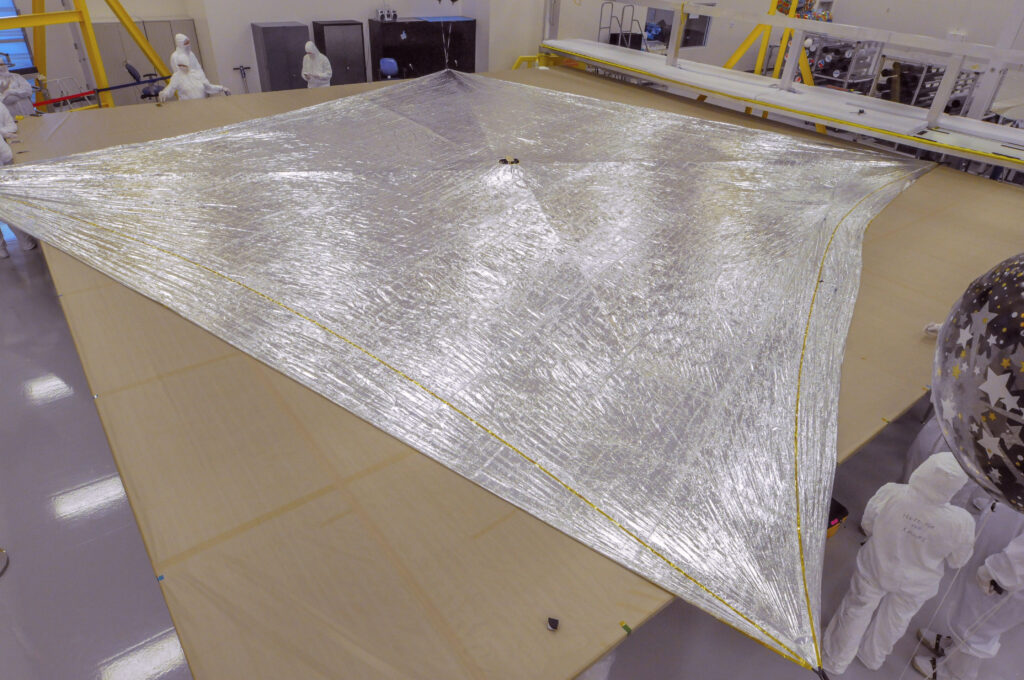NASA is completing preparations for the launch of the NEA Scout. It will be the first solar sail probe in history to visit an asteroid.
Backway cargo on board SLS
In late August – early September, NASA plans to launch a superheavy SLS rocket. The main purpose of the test will be to test the new carrier, as well as the Orion spacecraft, which will have to fly around the Moon and return to Earth.

But Orion will not be the only cargo on board the SLS. NASA is going to use the SLS capabilities to bring a backway load into interplanetary space — ten small vehicles created on the basis of the CubeSat platform. They are intended for testing experimental technologies, studying the Moon and space weather. One of these ten vehicles will be the NEA Scout (Near-Earth Asteroid Scout) probe.
NEA Scout Technical Device
In terms of its dimensions, the NEA Scout is comparable to a shoe box. Its dimensions are 30 × 20 × 10 cm (6U), weight — 14 kg. The scientific load of the probe is represented by a 14-megapixel monochrome camera developed by the Jet Propulsion Laboratory.

NEA Scout will have to make a close flyby of one of the near-Earth asteroids. Initially, the device was planned to be sent to the stone under the designation 1991 VG, but due to the postponement of the SLS launch, the mission goal changed to asteroid 2020 GE. Its diameter is only 18 meters. If successful, 2020 GE will become the smallest celestial body explored by the Earth device.
The NEA Scout is equipped with a small compressed gas power plant. It can be used to orient the device and perform small maneuvers, but it is completely insufficient to achieve 2020 GE. Therefore, NEA Scout also received an experimental solar sail. It is a film made of aluminum with a plastic coating thinner than a human hair with a total area of 85 m2. Once deployed, the sail will reflect photons of sunlight, creating thrust that will allow the NEA Scout to reach its target.
Rendezvous with asteroid
Currently, the mission plan looks like this. After deploying the sail, NEA Scout will fly around the Moon. This maneuver will give it enough speed to make a visit to 2020 GE in September 2023. At this moment, the asteroid will be at a distance of 5.7 million km from Earth.

According to experts, NEA Scout will make the slowest passage of another asteroid in history: its speed relative to 2020 GE will not exceed 30 m/s. The probe will fly at a distance of less than 2 km from the celestial body, which will allow it to take pictures of its surface with a resolution of less than 10 cm/pixel. Scientists hope that this will allow us to determine whether the asteroid is a solid body or is a cluster of rocks (the so-called garbage heap).
The success of the NEA Scout mission should be an important milestone that will demonstrate the capabilities of space sails to explore the Solar System. The next step will be taken in 2025, when NASA launches the Solar Cruiser mission. It will be equipped with a sail with a total area of 1,700 m2.
According to https://www.nasa.gov
Follow us on Twitter to get the most interesting space news in time
https://twitter.com/ust_magazine

